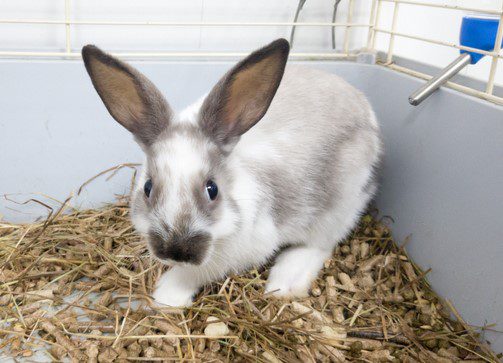What Should I Add to My Rabbit’s Cage?
Did you recently get or are considering getting a pet rabbit? Find out what you should put inside your pet rabbit’s cage to keep them safe and happy by reading our Dunedin, FL, animal hospital’s article below.

Rabbits are active, intelligent, and social animals. And as such, they require a suitable living environment that will afford for a healthy diet, plenty of fresh water, social interactions, and, quite simply, the ability to behave like a rabbit.
In any enclosure, they should be able to run, hop, stand on their hind legs, dig, fully stretch out, and sleep.
When placed in inappropriate environments, however, rabbits run the risk of developing obesity, foot sores, gastrointestinal issues, and behavior issues.
Rabbits should have both spacious main and exercise enclosures.
Main Enclosures
This is where your rabbit lives most of their life, when they are not out exercising or playing with you, of course. Just like your living space, you want to make sure it is constructed and organized in a way that is the safest and most comfortable it can be.
Dimensions
Generally, a good rule of thumb is to provide a main enclosure that is at least four times the size of your rabbit. But the larger the better. As already mentioned, there should be plenty of room for your pet to play and sleep (their areas for play and sleep should be separate), but there should also be ample space for a litter box, a water bowl or bottle, and an area for pellets and hay.
For small to medium sized rabbits like Dwarf or Dutch rabbits, their enclosures should be at least 24 inches wide, 24 inches high, and 36 inches long.
For larger breeds like the Flemish Giant, enclosures should be at least 36 inches wide, 36 inches high, and up to 120 inches long.
If you have multiple rabbits, you should double the size of the cage per animal.
Structure
Wire-sided cages are best for ventilation, cleaning, and preventing a rabbit from escaping. In order to avoid sores and allow for easy cleanup, the floor should be solid like plastic (wooden cages are harder to disinfect).
A rabbit’s cage should be placed somewhere in a dry and somewhat dim area of the house that is typically populated by you and your family members. Again, they are social animals, and they require daily interaction with people or other rabbits.
Materials Inside
A rabbit owner should provide one to two inches of high-quality paper-based bedding in their pet’s main enclosure. Other items that are needed inside include a litter box in the corner with paper-based products, a cardboard hide box, a hay rack, a water bowl or bottle, a small pellet dish, and toys.
Rabbit-safe toys include untreated non-cedar wooden sticks or blocks, lots of hay to wear down their continually growing teeth, cardboard paper tubes, hard plastic baby/cat/bird toys, tunnels or castles with platforms made of nontoxic wood or cardboard, and digging boxes, which can be a plastic tub or cardboard box filled with layers of carpet, hay, paper litter, or newspaper. Toys that are suitable for rabbits can be found here.
No matter what toys you choose, make sure that you never give your pet anything that has small parts that could be swallowed. Also, it’s important to keep things around a rabbit’s cage that it can use to mark its territory (using chin secretions, urine, and droppings).
Exercise Area
In order to stay in optimal health, a rabbit should also be provided with an area to exercise in for at least four hours a day.
Dimensions
You should provide your rabbit with an exercise space that is about 24 square feet. The height of the walls should be about three to four feet tall.
Structure
Specialty cages are available (like the Frisco Wire Small Pet House Cage), but baby gates can be great for creating a safe and large space for your rabbit to run and hop around.
It is recommended that these areas be established inside your home, not outside, due to environmental and health concerns.
Materials Inside
If you decide to purchase an indoor baby gate, and you do not have carpet, make sure that you provide yoga mats or bits of carpet to prevent pressure sores from developing on your rabbit’s feet. You should also provide plenty of fresh water for your rabbit to keep them properly hydrated.
As far as things that rabbits should be kept away from, you should make sure that you fully “rabbit-proof” and remove access to electrical wires, toxic plants, and chewing on the walls.
Our Dunedin, FL, Vets Can Answer Your Rabbit Cage Questions
Rabbits require very specific environments in order to thrive in life, but after careful consideration, you should be able to set up spaces that are safe, stimulating, and comfortable for your animal to live in.
If you are unsure of your rabbit’s current digs, you can always consult your Dunedin, FL, veterinarians for tips and advice during your rabbit’s next visit. To schedule your rabbit’s exam, give our animal hospital a call at (727) 953-6588.
